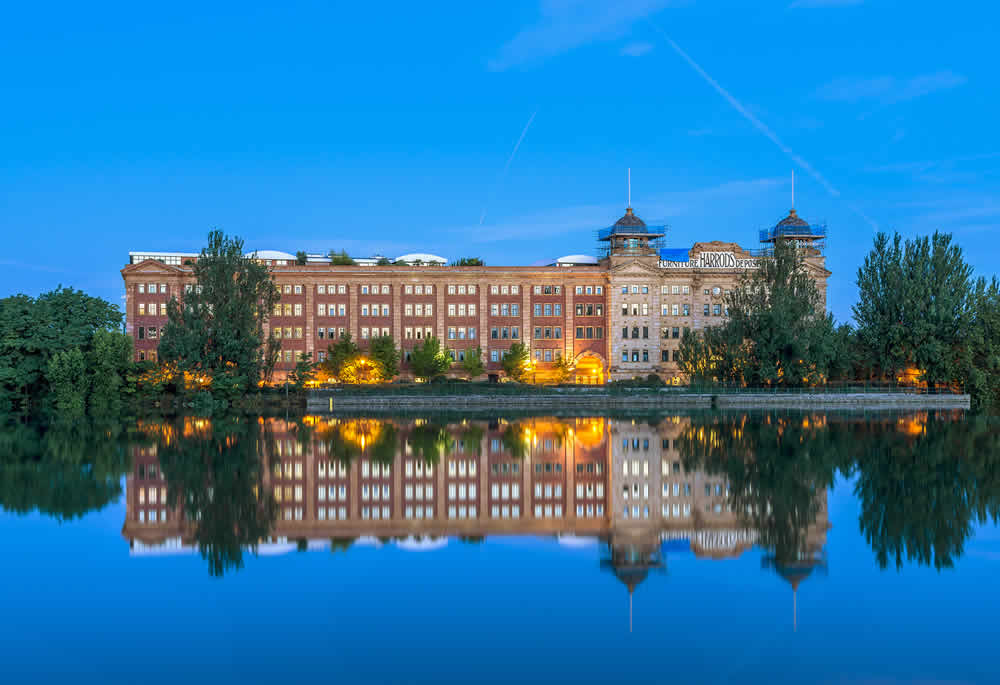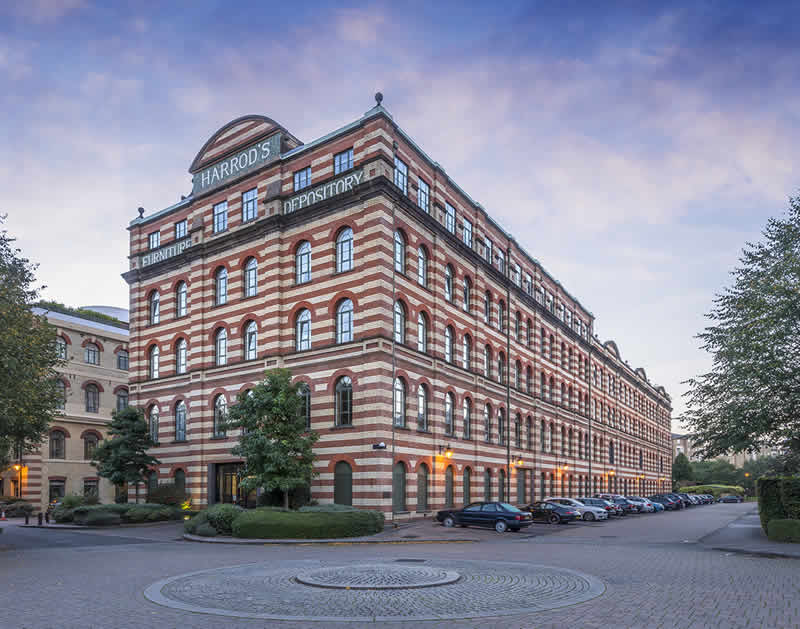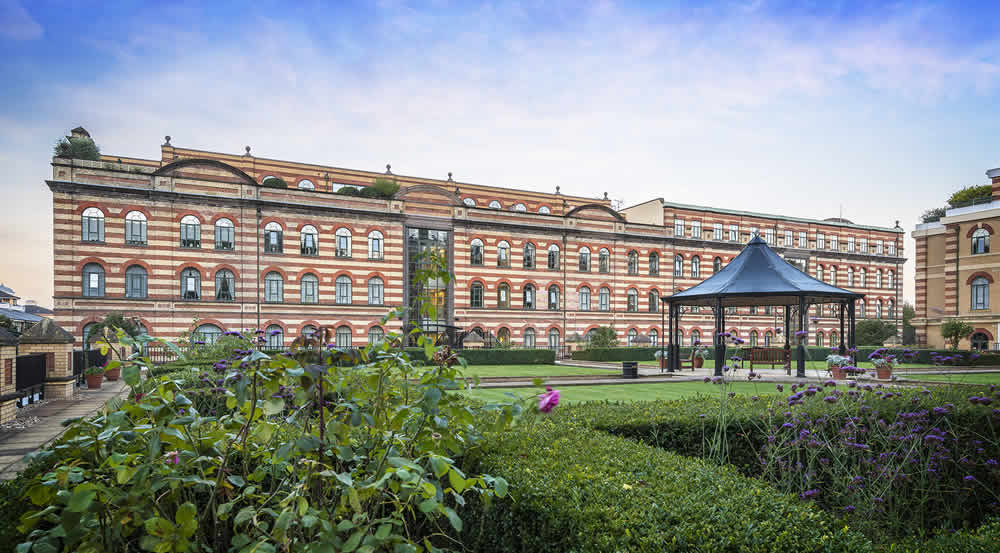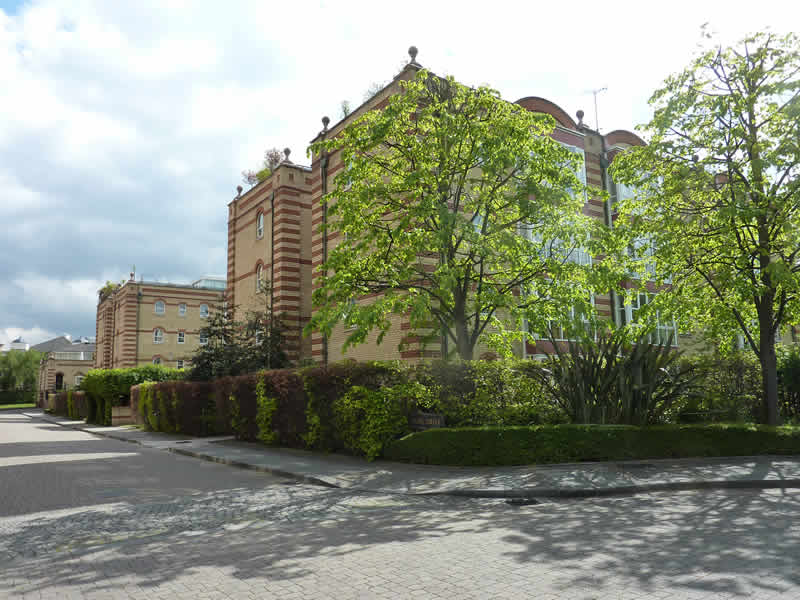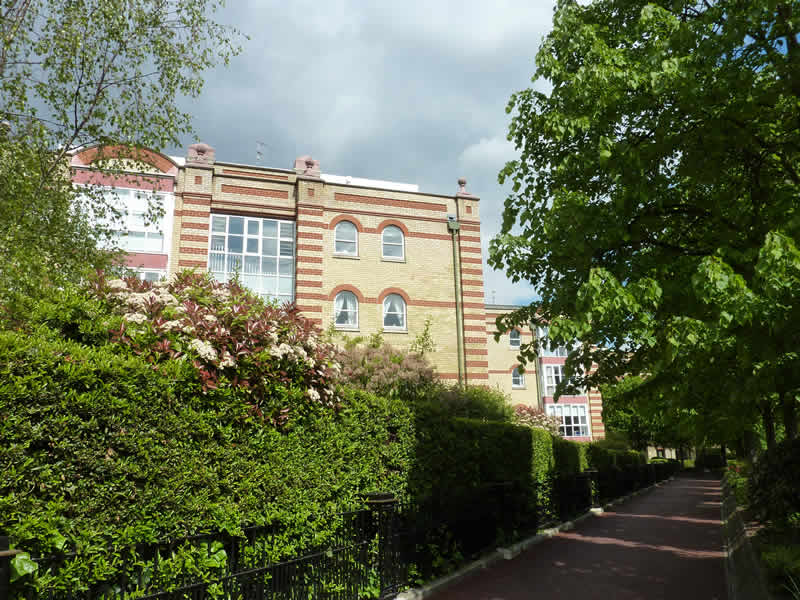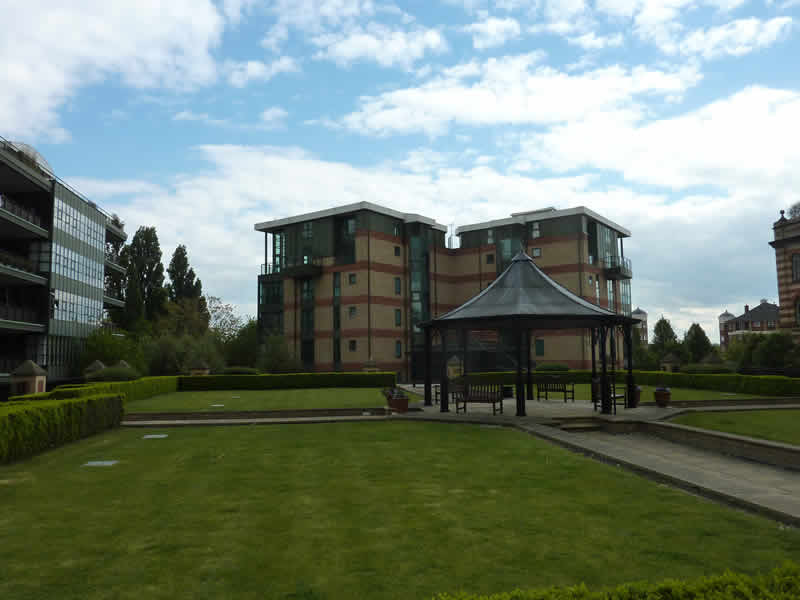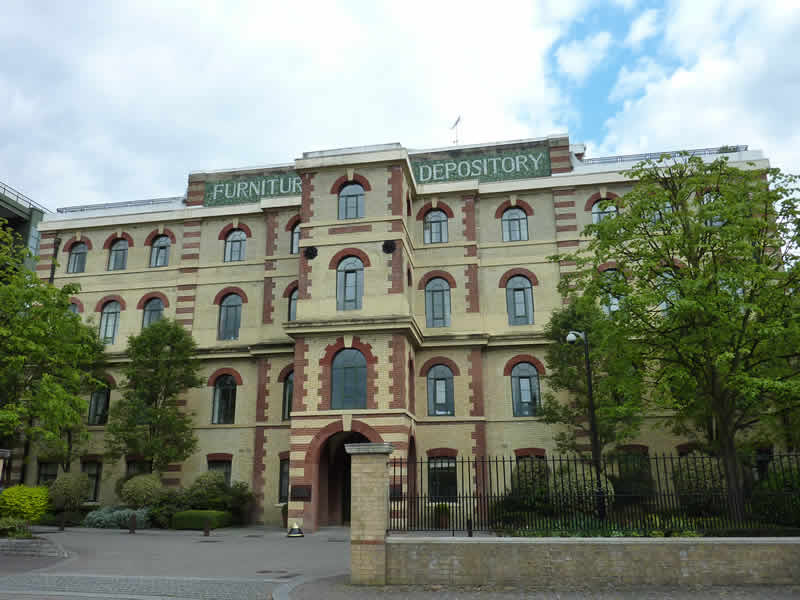As the heyday of Empire waned, the depositaries began to lose their relevance, and the buildings started to moulder and crumble with neglect. But in the 1990’s the demand for riverside apartments in London gave the Depository new purpose and life. Berkeley Homes acquired the buildings and surrounding land and converted the whole into 230 flats and 38 purpose-built townhouses, all designed to maintain the style and colours of the original with bands of red tiling and yellow brick. Lifts were installed in the three former warehouses, the concrete floors and walls became the skeleton infrastructure of high-quality apartments, and the central warehouse - as well as housing high-ceilinged new apartments - became a full-blown Leisure Centre for Residents. The Leisure Club now comprises an enviable 25 metre pool, a gymnasium, sauna, steam room and Jacuzzi.
The three central buildings are named after the designer of the buildings and the founders of the Harrods store; William Hunt Mansions [facing the Thames], Charles Harrod Court [centre] and Richard Burbidge Mansions. Their residential capacity has been augmented by modern blocks of apartments: Oriel Drive, Wrenn House and Keble Place and a group of 20 townhouses in St Edmunds Square and 18 on Trinity Church Road. All embrace the red and yellow bands sympathetic to the originals. The whole set of high quality accommodation sits in a landscaped and gated residential estate called Harrods Village.

